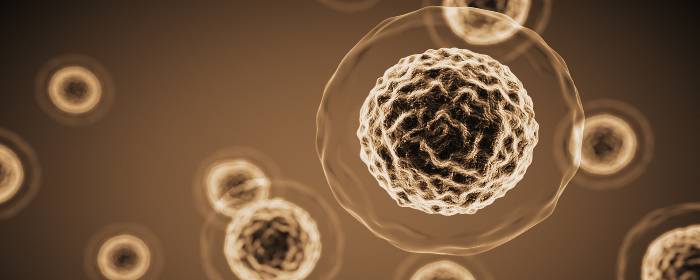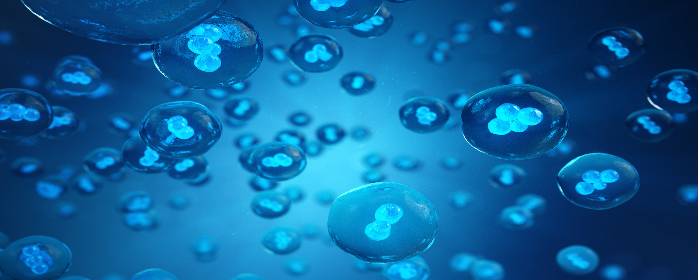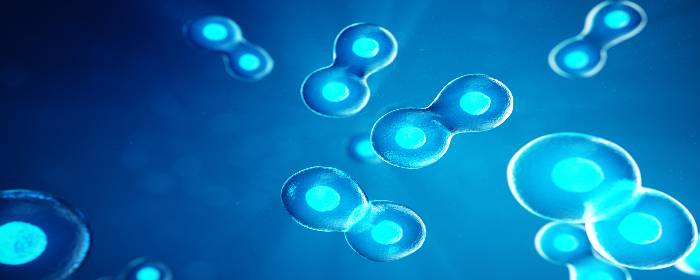
by admin | Jul 22, 2019 | ALS, Mesenchymal Stem Cells, Multiple Sclerosis
Amyotrophic Lateral Sclerosis(ALS, Lou Gehrig’s disease) and Multiple Sclerosis (MS) are two separate diseases with some important similarities. Both ALS and MS interfere with a person’s ability to move. In both diseases, nerve cells are affected. In fact, in both diseases, cells of the immune system seem to attack and destroy the material that wraps around nerve fibers. Without this covering, nerve cells do not function properly, which is why muscle weakness and other problems occur in both ALS and MS.
Traditional treatments for MS and ALS are different. More than 15 drugs are approved to treat MS. In many patients, one or more of these treatments can help reduce flareups and perhaps slow the progression of the disease (ocrelizumab in progressive MS). ALS, on the other hand, is a very progressive condition. Two drugs (riluzole and edaravone) modestly slow down the rate at which ALS gets worse. Neither MS nor ALS, it should be mentioned, can be cured.
Because of the similarities between these distinct diseases, researchers conducted a clinical trial of both MS and ALS patients. The doctors infused mesenchymal stem cells into patients and followed their progress. The goals of the study were to determine if stem cell infusion was safe and if it was effective.
In MS patients, stem cell infusion helped reduce physical disability (mean score on the Expanded Disability Status Scale improved) for at least six months. In ALS patients, mesenchymal stem cell infusion appeared to stabilize the disease for at least six months (average score on the Amyotrophic Lateral Sclerosis Functional Rating Scale stayed the same). Given that ALS patients tend to decline rapidly, maintaining stability is actually a great success.
Interestingly, researchers conducted an MRI the day after stem cell infusion and found the stem cells were already moving to various places around the brain and spinal cord. This finding suggests that stem cell infusion works very rapidly, and that stem cells target diseased regions within the body.
It should be noted that many patients had temporary symptoms related to the injection such as fever and headache. The symptoms went away within days, however. Importantly, no major adverse events occurred during two years of follow-up.
Taken together, this research suggests that mesenchymal stem cell transplantation is a safe and effective treatment for patients with MS and ALS. Moreover, this infusion causes virtually immediate effects in the central nervous system. While more research is needed, these results may offer hope to patients with these challenging neurological diseases.
Reference: Karussis, D. et al. (2010). Safety and immunological effects of mesenchymal stem cell transplantation in patients with multiple sclerosis and amyotrophic lateral sclerosis. Archives of Neurology. 2010 Oct;67(10):1187-94.

by admin | Jul 19, 2019 | Bone Marrow, Mesenchymal Stem Cells, Multiple Sclerosis
Multiple Sclerosis is a disease of the nervous system that involves the demyelination of nerve cells. As nerve cells lose their myelination, it becomes harder for the cells to communicate with one another. Though there are a number of treatment options for multiple sclerosis, which usually involve immunosuppressants, the conventional treatments do not always work over the long-term and may be associated with unwanted side effects. Given the promising results of stem cells being used in treatments for other nervous system diseases, scientists have reasoned that stem cells could provide a valuable therapy for those with multiple sclerosis.
A recent study published in Cytotherapy has demonstrated for the first time the use of neural progenitors derived from bone marrow mesenchymal stem cells. According to the authors of the study, it has previously been recognized that these cells have the potential to help with multiple sclerosis therapy, whether they come from multiple sclerosis patients or those without multiple sclerosis. Preclinical research has also shown that the use of these stem cells can improve disease in multiple sclerosis models and lead to the recruitment of progenitors to sites of inflammation.
In the current study, scientists wanted to establish the safety and dosing of intrathecal neural progenitors derived from bone marrow mesenchymal stem cells in the treatment of multiple sclerosis and investigated the use of these cells in six patients with progressive multiple sclerosis who were not responding to conventional treatments. The patients were treated with between 2 and 5 injections of the stem cells, and they were evaluated for an average of 7.4 years following their first injection.
Not only were there no safety issues that arose with any of the treated patients, but 4 of the 6 patients demonstrated measurable clinical improvement through the use of stem cell treatment. The results of this pilot study provide support for both the tolerability and effectiveness of stem cell therapy for multiple sclerosis. Future research will help to clarify the specific protocols that may be used to achieve the desired results in this group of patients.
Reference: Harris, VK, Vyshkina, T, & Sadaiq, SA. (2016). Clinical safety of intrathecal administration of mesenchymal cell-derived neural progenitors in multiple sclerosis. Cytotherapy, 18(12), 1476-1482.

by admin | May 3, 2019 | ALS, Mesenchymal Stem Cells, Stem Cell Therapy
Amyotrophic lateral sclerosis or ALS is a neurological disease that causes muscle weakness, profound disability, and ultimately death. ALS is sometimes referred to as Lou Gehrig’s disease, named for the New York Yankee baseball player who developed the condition later in his life. Notably, physicist Stephen Hawking long suffered from the condition.
ALS affects the nerves that control movement. As nerve cells become dysfunctional and die, a person’s muscles become weak. The disease often starts with weakness in one part of the body before moving to other parts. In 4 out of 5 people with ALS, the first symptom is a weakness of one limb but not the other. Over time, however, the disease spreads to virtually all motor neurons (nerve cells) in the body. Eventually, patients are unable to walk because of muscle weakness and are usually confined to a wheelchair. The condition becomes particularly difficult to manage and potentially life-threatening when it starts to affect lung muscles, which make it hard for patients with ALS to breathe.
There is no cure for amyotrophic lateral sclerosis. For the most part, however, treatment for ALS focuses on reducing the symptoms of the condition rather than treating it. Patients often undergo intensive physical, occupational, and speech therapy regimens to help manage symptoms of ALS. Physicians may prescribe drugs to reduce muscle spasms, sleep problems, and pain associated with the condition. Researchers are constantly looking for ways to improve ALS treatment.
Dr. Petrou and co-authors recently reported clinical trial results in the highly regarded medical journal, JAMA Neurology. The researchers started their research by altering mesenchymal stem cells in the laboratory so that they produce neurotrophic growth factors. In other words, they engineered stem cells to release substances that help nerve cells grow and survive. Then they tested these stem cells in two clinical trials. In the first clinical trial, the doctors used these stem cells to treat six patients with early-stage ALS and six patients with advanced ALS. In the second clinical trial, they tested the stem cells in 14 patients with early-stage ALS.
All patients in both trials tolerated the stem cell treatments very well. There were no serious side effects related to treatment. 87% of the patients responded positively to treatment, which means they showed at least 25% improvement in physical function and/or lung function. These positive results from stem cell treatment are particularly impressive because ALS gets worse over time. Patients generally either stay the same or get worse—it is quite unusual for them to get better. Encouraged by these results, the researchers who worked on this study will now confirm these results in larger clinical trials. The hope is that this stem cell treatment will be available for patients with ALS in the coming years.
Reference: Petrou P. et al. (2016).Safety and Clinical Effects of Mesenchymal Stem Cells Secreting Neurotrophic Factor Transplantation in Patients With Amyotrophic Lateral Sclerosis: Results of Phase 1/2 and 2a Clinical Trials. JAMA Neurology.2016 Mar;73(3):337-44.

by admin | Apr 19, 2019 | ALS, Mesenchymal Stem Cells, Stem Cell Research
Amyotrophic lateral sclerosis (ALS) is an incurable neurologic disorder that causes muscle weakness, and disability. In ALS, nerve cells degenerate causing muscle weakness and atrophy. ALS affects the nerve cells that connect the brain to the spinal cord (upper motor neurons), and nerve cells that connect the spinal cord to muscles (lower motor neurons). While some patients with ALS will experience paresthesias (numbness and tingling), most nerves that detect sensations remain intact until the very latest stages of the disease. Over time, people with ALS may experience cognitive problems such as mild dementia, though most stay mentally sharp. Patients with ALS may also experience Parkinson’s-like symptoms, such as tremor and slowness of movement (bradykinesia). When the nerves that control swallowing or breathing become dysfunctional, ALS can become life-threatening or lethal. Damage to these nerves and muscles could lead to aspiration pneumonia, and respiratory failure, respectively.
ALS is also known as Lou Gehrig’s disease because the famed New York Yankee publicly struggled with ALS. Perhaps people alive today are more familiar with another patient who suffered from ALS, the Nobel laureate physicist, Stephen Hawking. Dr. Hawking was well known for being confined to a wheelchair and almost completely paralyzed, requiring a specialized computer interface to communicate.
There is no specific treatment for ALS. Therapy is aimed at controlling the symptoms of the disease. For example, patients may have a breathing tube placed in their neck (tracheostomy) and be connected to a ventilator to help support breathing. Likewise, a feeding tube in the stomach can help patients receive hydration and nutrition if they cannot safely swallow food because of neck muscle weakness. Physical therapists help patients maximize the strength and function. Certain medicines can be used to help treat muscle spasms, sleep problems, pain, and depression.
Since there is no cure for ALS, and really no specific treatment for the condition, there is considerable interest in discovering effective treatments. One of the most promising potential therapies is to use stem cells to treat ALS. Since ALS is caused by the destruction and loss of motor neurons, a reasonable treatment approach is to use stem cells that can become motor neurons and promote motor neuron growth and development.
Recently, researchers conducted two clinical trials to evaluate the safety and feasibility of using bone marrow-derived mesenchymal stromal cells to treat patients with ALS. In one clinical trial, the researchers infused stem cells intravenously, while in the other they infused the stem cells into the cerebrospinal fluid around the spine (intrathecally). Patients in both trials were followed for up to 12 months after the infusion to see if the stem cells caused side effects. During the follow-up period, there were no reports of adverse events related to the treatment. Given the success of these trials, this work clears the way for future clinical trials to study the efficacy of stem cells for treating amyotrophic lateral sclerosis.
Reference: Nabavi et al. (2019). Safety, Feasibility of Intravenous and Intrathecal Injection of Autologous Bone Marrow-Derived Mesenchymal Stromal Cells in Patients with Amyotrophic Lateral Sclerosis: An Open-Label Phase I Clinical Trial. Cell Journal. 2019 Jan;20(4):592-598.

by admin | Apr 15, 2019 | Stem Cell Research, Alzheimer’s Disease, Stem Cell Therapy
Alzheimer’s disease is the most common form of dementia, and though its prevalence is growing, there are currently no medical interventions that are able to reverse or slow the disease. Most current therapies address the symptoms of Alzheimer’s disease rather than the underlying cause of the disease.
Stem cells appear to offer a promising opportunity for treating Alzheimer’s disease and other neurodegenerative disorders, and a recent review published in Current Alzheimer Research has covered research into the ways stem cells can be applied to these disorders. Specifically, the authors of the review discuss the stem cell sources that may offer the potential to treat neurodegenerative diseases and the mechanisms by which these stem cells may confer benefits to this set of patients.
According to data collected so far, stem cells may be both safe and effective in treating neurodegenerative disorders like Alzheimer’s disease, but the mechanism by which they produce benefits for those with these disorders is not entirely clear. There are some data that show that the replacement of degenerated tissue with new proliferative stem cells accounts for stem cell benefits in models of neurodegenerative disorders, while other data show that stem cells can lead to advantageous enhancements in the expression of synaptic proteins.
Evidence from other studies, however, suggest that stem cells help with neurodegenerative disease through the release of neurotrophic factors that lead to paracrine benefits. Additional studies point to modulation of the immune system as the way that stem cells may help those with neurodegenerative disorders.
Future research will help to elucidate the specific mechanisms by which stem cells can provide effective therapy for people with neurodegenerative disorders. It may be the case that a variety of stem cell types used in multiple ways can be helpful for neurodegenerative disease therapy, and research will help to delineate the different ways stem cells can be used and inform the therapies that are developed.
Reference: Bali, P, et al. (2017). Potential for stem cells therapy in Alzheimer’s disease: Do neurotrophic factors play a critical role? Current Alzheimer Research, 14(2), 208-220.






 St. Petersburg, Florida
St. Petersburg, Florida
